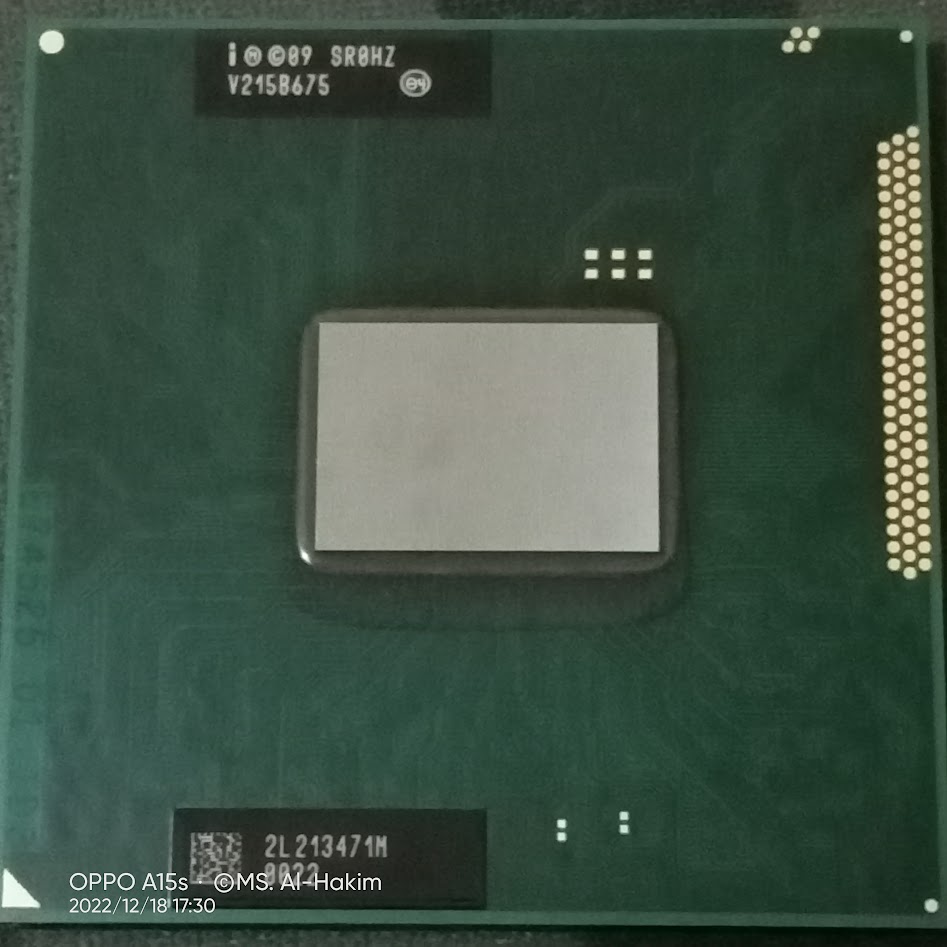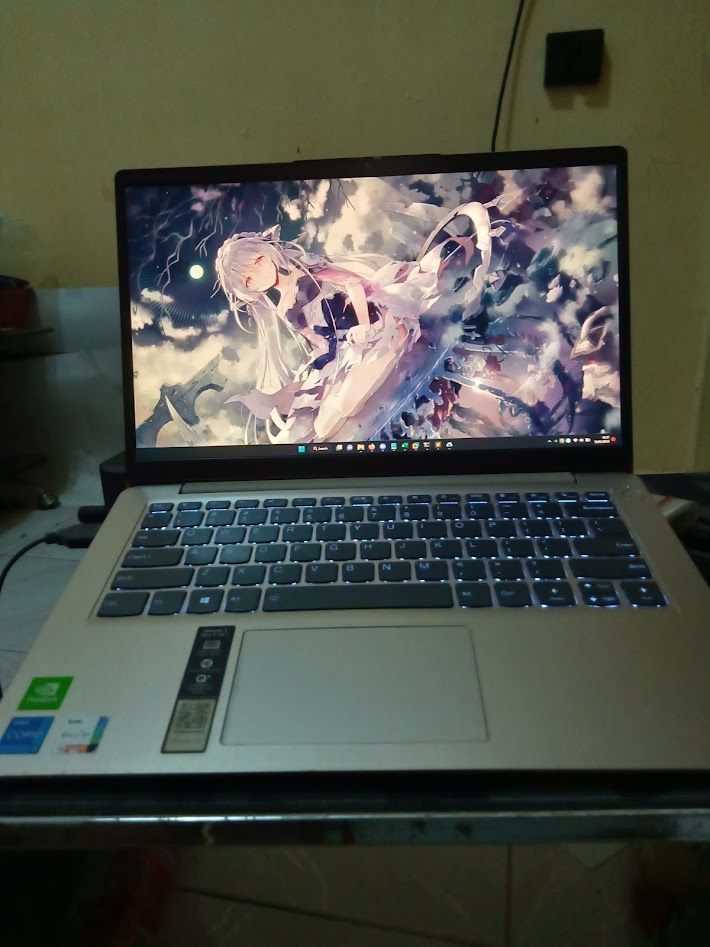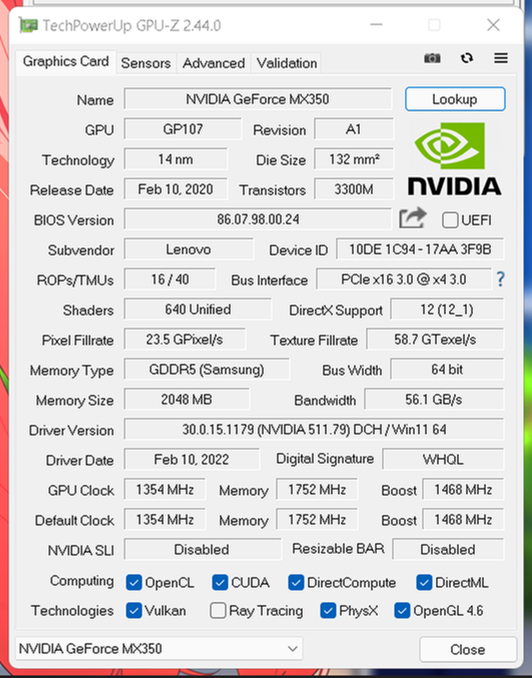Comparing: Intel HD Graphics Mobile (Sandy Bridge) vs NVIDIA GeForce MX350
In this comparison, we analyze two Videocards: Intel HD Graphics Mobile (Sandy Bridge) and NVIDIA GeForce MX350, using synthetic benchmark tests to evaluate their overall performance. This side-by-side comparison helps users understand which hardware delivers better value, speed, and efficiency based on standardized testing. Whether you're building a new system or upgrading an existing one, this benchmark-driven evaluation offers valuable insights to guide your decision.

Intel HD Graphics Mobile (Sandy Bridge)
| Type: | Videocards |
|---|---|
| Brand: | Intel |
| Model: | HD Graphics Mobile (Sandy Bridge) |

NVIDIA GeForce MX350
| Type: | Videocards |
|---|---|
| Brand: | NVIDIA |
| Model: | GeForce MX350 |
Specification Comparison Table
This specification comparison presents technical details of several devices or components to help you understand the key differences between each option. Use this table as a reference to determine which device best suits your needs.
| Specification | Intel HD Graphics Mobile (Sandy Bridge) | NVIDIA GeForce MX350 |
|---|---|---|
| Architecture | Sandy Bridge | Pascal |
| Codename | Sandy Bridge GT1 | GP107 |
| Buswidth | - | 64 bit |
| Clock | 650 MHz - 1050 MHz | 1354 MHz - 1468 MHz |
| Memory Clock | SHARED | 2GB GDDR5 |
| Technology | 32 nm | 14 nm |
| Interface | IGP | PCIe 3.0 x4 |
| Technology | 32 nm | 14 nm |
| Segment | Laptop | Laptop, Dedicated GPU |
Submission Comparison Table
This submission comparison table displays the number and details of benchmark data submissions from various devices or components. This information helps you understand the performance based on the benchmarks that have been tested, as well as providing an overview of the consistency and popularity of the available benchmark results.
Submission Comparison Chart
This chart visualizes the benchmark scores comparison between two hardware devices based on submitted data.
Media Gallery
A collection of photos of tested hardware. These images can help you identify the physical form, model, and variant of the hardware in question. These photos are from our own documentation, and if they are not available we may not be able to document them.
About Hardware Intel HD Graphics Mobile (Sandy Bridge)
Intel HD Graphics (Sandy Bridge) is Intel's second generation integrated GPU, present in processors such as the Intel Celeron B815, released in 2011. This GPU uses the Sandy Bridge architecture and has between 6 and 12 execution units (EUs) depending on the CPU model. On the Celeron B815, this GPU runs at a base frequency of 650 MHz and can go up to 1.05 GHz through the Dynamic Frequency (Turbo) feature.
Although not designed for high performance, Intel HD Graphics Sandy Bridge brings improvements over the previous generation, including support for DirectX 10.1, OpenGL 3.1, and HD video decoding hardware through Intel Quick Sync Video technology. This allows 720p to 1080p video playback to run quite smoothly, and the low power consumption is suitable for energy-efficient laptops.
However, due to the limited number of execution units and the absence of dedicated VRAM, the graphics performance is only suitable for light tasks such as browsing, watching videos, and using office applications. Light or older games such as Plants vs Zombies, Counter-Strike 1.6, and GTA: Vice City can still be played at low resolutions and minimum graphics settings.
Compared to newer generation integrated GPUs such as Intel HD 4000 and above, the performance of Sandy Bridge HD Graphics is already quite behind. But for an entry-level laptop like SAMSUNG 300E4Z with 4GB DDR3 Dual Channel RAM, this GPU is still worth using as a basic graphics solution in operating systems like Windows 7.
Overall, Intel HD Graphics (Sandy Bridge) on Celeron B815 is a simple yet functional graphics solution for light daily use, especially on older generation laptops that can still be utilized for basic productivity tasks and light entertainment.
Hardware Detail:
Device: SAMSUNG 300E4Z
RAM: 4GB DDR3 Dual Channel
OS: Windows 7
Sunday, 27 November 2022 02:25:40 | Update: 1 month ago
About Hardware NVIDIA GeForce MX350
The NVIDIA GeForce MX350 is an entry-level mobile GPU designed to enhance the graphics experience of mainstream laptop users. Based on the Pascal architecture (GP107) that is also used in the GTX 1050 series, this GPU has 640 CUDA cores and comes with 2GB GDDR5 VRAM, which provides much better graphics performance compared to integrated GPUs such as Intel UHD or Iris Xe Graphics.
MX350 supports DirectX 12, OpenGL 4.6, and NVIDIA Optimus Technology, enabling intelligent transition between integrated and discrete GPUs for power efficiency. Compared to the integrated GPU, the MX350 is capable of running more applications and games with smoother graphics, such as Adobe Photoshop, Premiere Pro, to popular games like Genshin Impact, Valorant, Dota 2, and GTA V at 720p to 1080p resolution with low to medium graphics settings.
While not a GPU for heavy gaming or professional editing, the MX350 still excels in daily multitasking and productivity scenarios, especially on laptops with dual channel RAM like the Lenovo IdeaPad Slim 3i 14ITL6 equipped with a Core i5-1135G7 and 12GB DDR4 3200MHz RAM. In this laptop, the combination of Intel Iris Xe Graphics and NVIDIA MX350 allows the system to choose the most efficient GPU for each workload, keeping the battery efficient without sacrificing performance when needed.
Overall, the GeForce MX350 is a well-balanced discrete GPU solution for casual users who want the increased graphics performance of an integrated GPU, but don't need the full power of the GTX or RTX series. This GPU is perfect for students, office workers, or multimedia users looking for a thin and light yet responsive laptop for visual tasks.
Hardware Detail:
Device: Lenovo IdeaPad Slim 3i 14ITL6
CPU: Core i5-1135G7
dGPU: GeForce MX350
RAM: 12GB DDR4 3200MHz Dual Channel (8+4)
OS: Windows 10, Windows 11 22H2
Friday, 06 August 2021 04:34:04 | Update: 1 month ago




